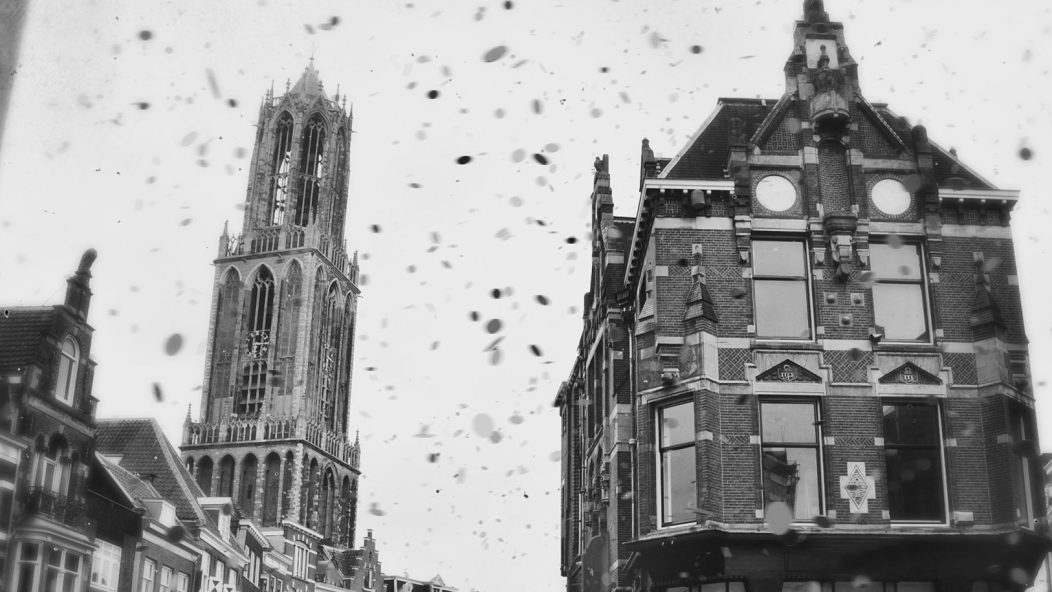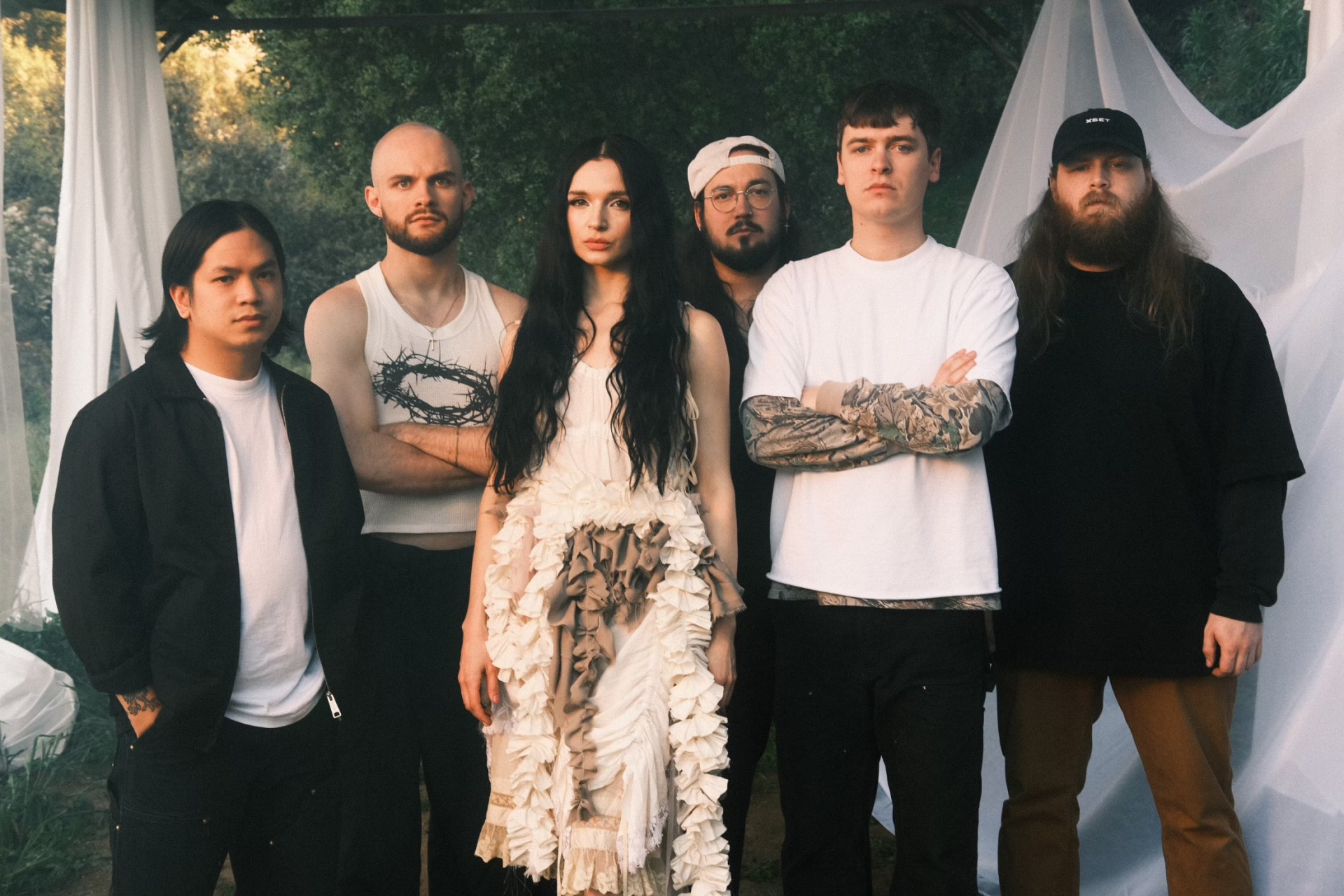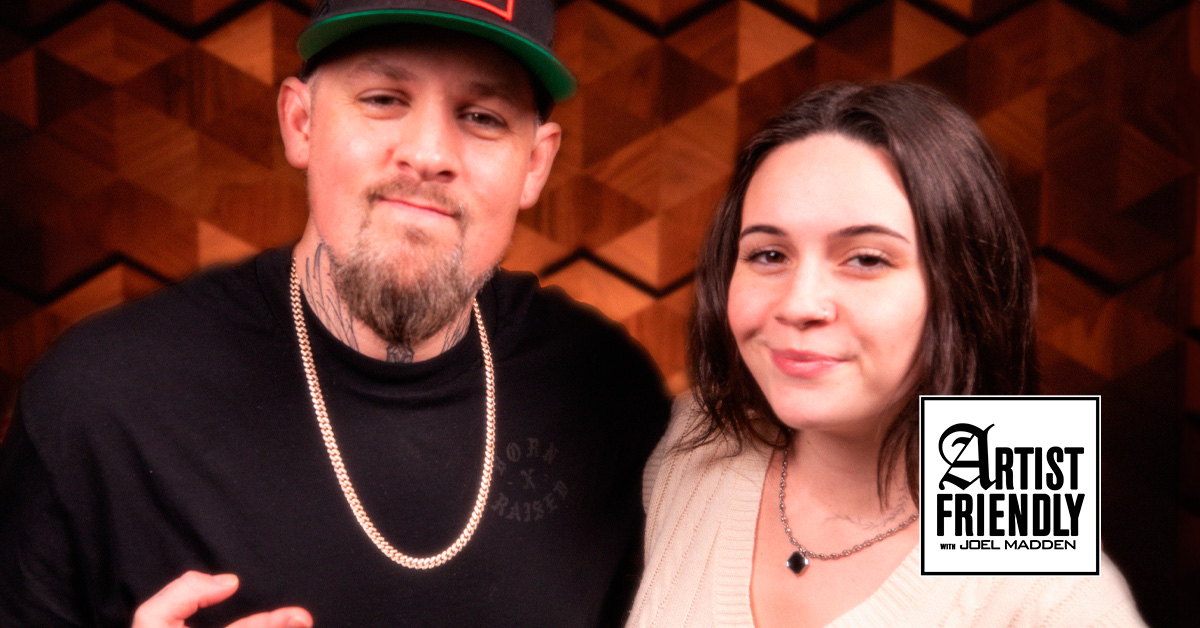
Scene Dive 3: Utrecht's Black Metal Scene Blends Arcane and Cosmopolitan
This article is the third in a series exploring different cities’ extreme music scenes, taking you to the venues, rehearsal spaces, record stores, and other places where the heart of metal beats in locations around the world. This Scene Dive takes you into the world of black metal blossoming in the heart of Utrecht, the Netherlands’ academic capital.
The Netherlands is a liminal place. Wedged between the encroaching sea and the economic powerhouses of Europe, the country of 17 million has a long history of cultural exchange and high-quality artistic output.
Few might think of Dutch cities and canals when picturing the places from which black metal emerges—The romantic ideal in fans’ heads is more likely to be a dank basement or moldering cabin than a shared rehearsal space in the heart of a European knowledge hub. However, Utrecht’s burgeoning scene is among the most vital wellsprings of extreme music in Europe heading into the mid-2020s.
Utrecht’s black metal artists are as committed to their visions as their Nordic peers, exploring highly individual aesthetic visions that range from explorations of history to epistemological deep-dives. Notably, few of these artistic visions center on Satan, though there are more traditional bands in Utrecht and nearby.
“I don’t hear a lot of the ice-cold, second-wave type of black metal being made here. It’s definitely there as well—bands making more conservative black metal—but if you’re a purist, you might not label Utrecht black metal as ‘black metal,'” says Ruben Schmidt of Wesenwille. “I like that there’s this diversity and that people feel free to create the thing they want; they’re not just following some sort of trend.”
Terzij de Horde‘s Jelle Agema says, “typically the people from Utrecht aren’t as interested in the occult or fantasy aspect, but what makes the music more real for them.” As one of the more politically outspoken bands in the scene, left-leaning Terzij de Horde have staked out unconventional territory in an artform known for bleakness and occasional recalcitrance against contemporary mores.
…
…
A mid-sized, well-educated city, Utrecht combines a bustling exchange of ideas with a physical intimacy that’s fostered collaborations while giving artists room to explore. In spite of a rising cost of living, nonprofits and other organizations continue to provide physical spaces that offer a home to extreme music.
Aided by this infrastructure, bands like Laster have pushed through the porous edges of black metal with an aesthetic approach quite far from corpse paint and candelabras. Nearby festivals like Roadburn in Tilburg keep the city’s crucible hot while offering Utrecht artists a larger platform for collaboration.
How did this ecosystem come to be? From scrappy punk beginnings to recent multi-genre showcases, Utrecht has benefitted from a combination of fertile ground and dedicated gardening.
…
A Real Hub
“There wasn’t much going on in Utrecht metal-wise [in the 2000s],” Joost Vervoort, vocalist of Terzij de Horde, says. “There were some metal bands, but just death metal, doom, stuff like that. There wasn’t really a black metal scene, and certainly not the same kind of genre-crossing at all.”
Terzij de Horde began their life as a grindcore project that gradually took on elements of screamo before delving deeper into black metal sounds. Other musicians concurrently began taking note of black metal made outside of the Netherlands and thinking about how to incorporate those textures into their own work. Wesenwille’s Schmidt and several friends found purchase in Icelandic black metal acts like Svartidauði and began exploring similarly abrasive textures.
“The complicated structures they work with, working with dissonance in a way that’s not just chaos and makes for a very nice song structure, a red thread running through it so it doesn’t come across as too random—to me and the other guys, Svartidauði fit that perfectly,” he says. Schmidt tried several configurations of Wesenwille while playing in death metal acts like Iron Harvest and honing his vision.
…
…
Physical spaces like dB’s Studio incubated acts like Wesenwille, Terzij de Horde and others as they began down the road of black metal. Like Stop in Porto, dB’s functions as a full-service center for the Utrecht metal scene, where artists can refine their craft, record their work, and play to local audiences. The space includes a beer bar and two different venues. “dB’s is a very unusual place in the Netherlands,” Vervoort says. “It’s a massive rehearsal location with 17 rehearsal spaces. Lots of people practice there, and not just Utrecht bands. It’s a real hub.”
DIY gatherings among local fans of extreme music fed into this hub. Laster member Nicky, who has also been connected with international group Silver Knife and several other bands, notes that “back in the early 2010s, Utrecht had this open secret called Violence Action, a string of events that showcased any type of music as long as it was grimy.” Violence Action was staged at various rehearsal spaces and other underground venues until landlords got wind and put an end to the idea.
Meanwhile, Terzij de Horde members, alongside local punks, organized a series of concerts featuring bands like France’s Celeste. Called Footprints in the Void, the series staged 30 or 40 shows beginning in 2009 that included Svartidauði and an early iteration of what’s now Laster. Similar series keep the torch lit today.
“Places like dB’s, EKKO, ACU, Moira and Nijverheid play a significant role in underground music,” Nicky says. “It’s where people meet, share creative ideas, and form new bands.” Ongoing concert series like Unlocking the Stellar Crypt bring curated groups of bands through, and local record shops and pubs keep the conversation active.
One point of contrast to many DIY venues in North America: a foundation (“stichting”) manages dB’s brimming calendar of concerts. This isn’t unique in Utrecht—larger venues like TivoliVredenburg regularly collaborate with smaller venues and other organizations. In short, there are formal structures in place to support musical risk-taking. The concerts hosted at these venues often lead to joint appearances at festivals like Roadburn.
This interdisciplinary approach is a lodestar not just for the venues, but the bands themselves. Utrecht’s musicians regularly take excursions outside of music for their inspiration, in turn pushing local music beyond black metal orthodoxy. Laster is one such act. “In its sound and aesthetics, metal music is not enough for us to play with, since we enjoy so many other types of music,” says Laster member Sylwin. “On our new material, we have tried to go even further by embracing a much cleaner sound, most apparent considering vocals, but on guitars and percussion as well.” Laster member Nicky calls the band “energetic and eclectic.”
…
…
Sylwin refers to the process of pushing through the band’s “musical prejudices” as “exploration by expression.” Like others in Utrecht, they’ve looked to film, contemporary art, and even games for inspiration, resulting in a sound that takes frequent excursions outside of blast beats and frantic guitar. However, Laster isn’t “atmospheric black metal” per se—in this, they’re like other Utrecht bands blazing fresh paths or choosing to get lost altogether in pursuit of their ideas.
…
Interdisciplinarians
Visual art and literature played a major role in Grey Aura‘s Zwart vierkant, their most recent full-length. Using vocalist and multi-instrumentalist Ruben Wijlacker’s novel De protodood in zwarte haren, a narrative of Modernist madness, as its songwriting core, the band incorporated found sound from the novel’s settings and packaged the record in cover art by Sanja Marusic that gestures toward the stark colors of Suprematists like Kasimir Malevich.
Grey Aura makes conscious connections to a variety of artists in their work—as a multimedia artist, Wijlacker has found inspiration in writers like Rimbaud as well as Malevich and Wassily Kandinsky’s theoretical texts. “Symbolism, Decadentism and Modernism are art movements I am hugely influenced by and one need only listen to our music and read our lyrics to understand this,” he says. “I like art that has a spiritual aspect to it; something that transcends the ego and investigates what lies beyond.”
…
…
The members of Terzij de Horde, meanwhile, draw on the vitalism of poet Hendrik Marsman, whose work includes defining Dutch tracts. “Black metal is vitalistic, it is life-affirming. You can bullshit your way around it, but even [dark suicidal black metal] is still an expression of vitalism,” vocalist Vervoort says. “Marsman was very much a Nietzschean poet. His work is all about saying ‘yes’ to life in the face of tragedy and turmoil. It’s an energetic, almost enraged affirmation.”
Guitarist Agema agrees with this characterization of Marsman’s work and the way the band has channeled it. “To me, it’s also about rage—about living through rage or anger, connecting with it, and accepting that that’s also part of life, but not making it bigger than it is,” he says. “It’s also about love, about being vulnerable, about making mistakes.”
Terzij de Horde evoked Marsman directly on nine-minute single “Wacht/Lex Barbarorum”, which is their only Dutch-language release to date. Other bands like Grey Aura and Sterveling, a DSBM project from Weltschmerz and former Wesenwille and Iron Harvest member Michiel van der Werff, have used their native language more consistently.
“Dutch is more primal because it is the language I was brought up with,” van der Werff says. “English creates more of a distance between me personally and the subject at hand.” Sticking to his native tongue for the project allowed van der Werff to distill the music down to its essence. “Whereas most of my other bands are quite layered and can be rather complex, Sterveling was created for more simple music as far as technicality goes,” he says. “This forces me to really strip down the different parts in a song and the song structure to its most basic form.”
…
…
Whether it’s the pursuit of a cleaner sound, perfect dissonance or an enraged defense of life, Utrecht’s artists share a common attribute: focus. The many projects of Vestibulum, the artist behind Chronos Defied, share a fully committed focus on the vast, raw sounds of arcane black metal, dark ambience and dungeon synth. Vuur en Zijde deploy soaring, doomy vocals atop ragged black metal landscapes. Freja keep black metal’s frostiness while taking meditative excursions into melodic territory. Wilds Forlorn use literature to explore pessimism.
In short: there’s not an Utrecht sound so much as an Utrecht spirit uniting these artists.
Other bands further outside of black metal as such, like the defiant, hardcore-infused Throwing Bricks, still claim black metal as an influence and show it in full-bore tracks like “Hall of Mirrors.” The fact that many of these bands share members or fill in live when solo projects outgrow the studio speaks as much to the cooperative spirit of Utrecht as it does to the individualism and broad interests of the city’s musicians. It’s not surprising, then, that many in the city see opportunities for further growth and diversity even as Utrecht’s cost of living rises.
…
Something is Brewing
The scene has come a long way since Footprints in the Void. TivoliVredenburg, now an architecturally ambitious prestige concert hall, replaced what Vervoort calls “an old pop venue, a squat made official.” However, Terzij de Horde, alongside Wesenwille, Laster and Tilburg’s Ggu:ll, recently played a showcase demonstrating the widening spectrum of Utrecht black metal in the venue’s main hall.
Perhaps that explains Vervoort’s optimism in the face of news late in 2022 that dB’s Studio would be displaced by a block of condos. “They’ve been offered a new venue 300 meters up the road, but first it needs to be built,” he says. “I hope they can move into it seamlessly and not lose the continuity of the scene there. It will be big for Utrecht whether it goes well or wrong.”
Even as the squats give way to formal venues and older venues give way to condo blocks, Utrecht’s scene seems surprisingly vital (a noted point of contrast to San Francisco, which has seen musicians pushed out by a rising cost of living). Nicky of Laster says, “I’ve seen a lot of new bands pop up lately, so I’m sure something is brewing.”
Better-established bands and artists have kept busy, as well. Wessel of Laster says the band’s new album is finished: “We’ve been working on it for the past two and a half years or so. Our fourth little baby, ready to go into the world.” Freja, which he’s involved with, has also teased new material.
Van der Werff is working with Weltschmerz on new material and has further plans for Sterveling. “In 2023, the intention is to start playing shows. In January 2024, I intend to release a full-length album,” he says. Outside of extreme music, he’s active in experimental rockers Prospectors.
Terzij de Horde also have more in the works and plans to tour soon. They note that Iskandr’s principal songwriter O. recently moved to Utrecht, and both Agema and Vervoort sound excited about new material from Silver Knife, Seer’s Fire and the prolific Faceless Entity. Wijlacker has taken a detour from metal to explore softer textures as IJdelheid while preparing new Grey Aura material.
All are forging their way deeper into what black metal could be—or are pushing further past its outer limits.
In a quote that encapsulates the city’s together-apart mentality, Wijlacker says, “Personally, I like that there are other bands doing similar things and I respect their visions, even if they differ from mine. But I must also admit that I have been enjoying a more ‘distant’ lifestyle lately, focusing on our new full-length album and other artistic projects, without being too bothered with what other people are doing.”
…










